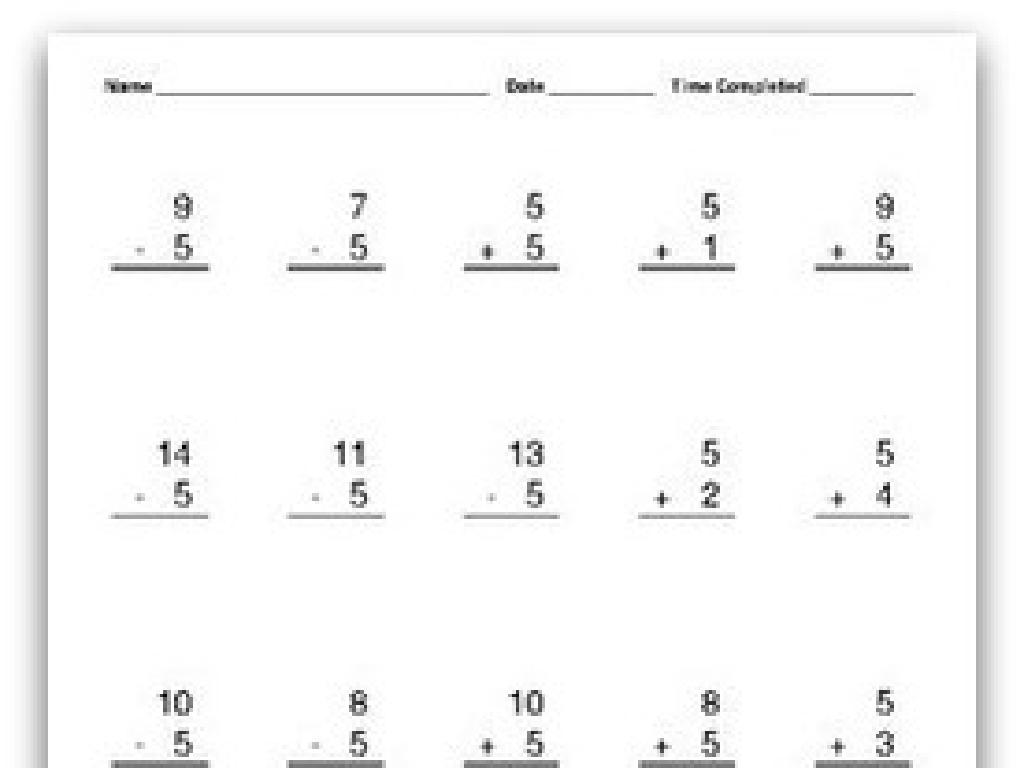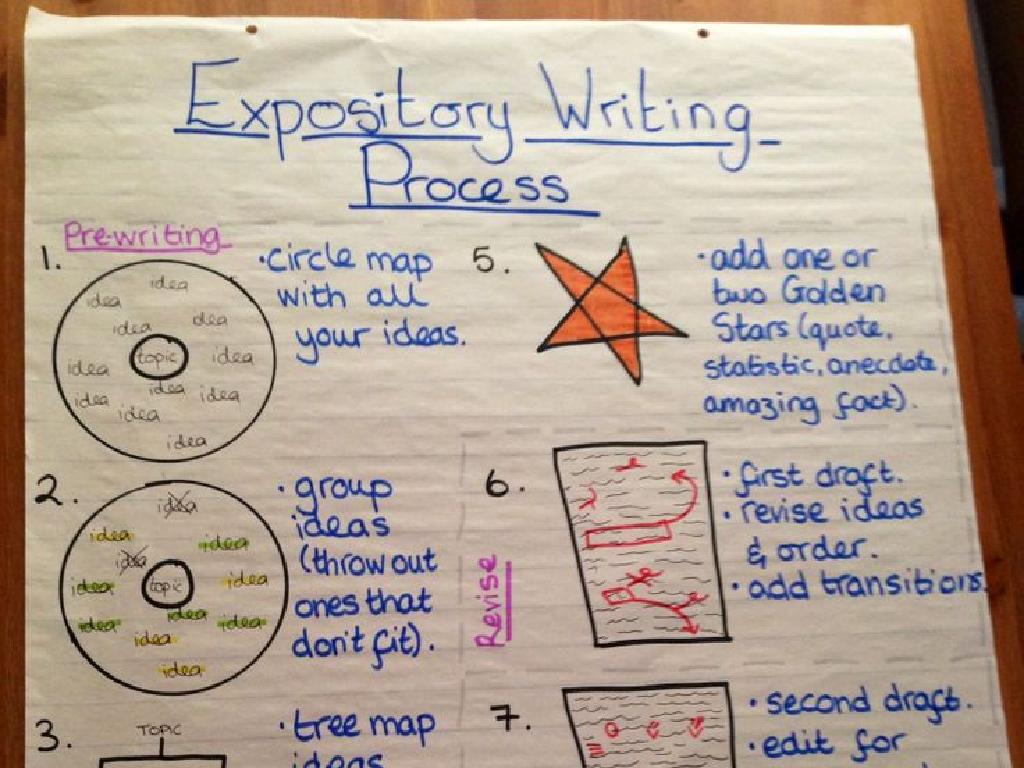Show Numbers On Frames - Up To 3
Subject: Math
Grade: Kindergarten
Topic: Counting To 3
Summary: This Kindergarten math lesson introduces counting to 3 using engaging ten-frame activities and everyday objects. Students learn to recognize numbers 1, 2, and 3 by placing dots on frames and counting fingers, toys, and blocks. Interactive games and hands-on practice help children visually understand quantity and number relationships. The lesson wraps up with real-life counting ideas to reinforce skills at home, making early math fun and meaningful.
Please LOG IN to download the presentation. Access is available to registered users only.
View More Content
Welcome to Counting!
– Greetings, young mathematicians!
– Today’s focus: Learning numbers 1, 2, 3
– Show me one finger, now two, then three!
– Practice showing numbers using fingers
– Counting with fingers is fun!
– Helps understand numbers visually & physically
|
This slide is designed to introduce Kindergarten students to the concept of counting up to three. Start the lesson with a warm and engaging greeting. Encourage the children to participate by showing one, two, and then three fingers, making it interactive. This activity helps them to visually and physically connect the concept of numbers to their own fingers, which is a practical and tangible way for young learners to grasp counting. The slide sets a foundation for understanding numbers and counting, which will be built upon in subsequent lessons. Make sure to praise their efforts and make the learning experience enjoyable.
Exploring Numbers 1, 2, and 3
– Numbers help us count
– Counting everyday things
– Like toys, fingers, and friends!
– Discovering numbers 1, 2, and 3
– Numbers 1, 2, and 3 are special
– Practice with number frames
– Use frames to show 1, 2, and 3 items
|
This slide introduces the concept of numbers to Kindergarten students, emphasizing their use in counting objects in everyday life. Start by explaining that numbers are tools we use to find out how many things we have. Use tangible examples like toys, fingers, and friends to make the concept relatable. Focus on the numbers 1, 2, and 3, as these are the building blocks for understanding larger numbers. Incorporate number frames as a visual aid to help students visualize and practice counting. For example, show a frame with one apple, then two apples, and finally three apples. Encourage the children to bring items from home that they can count within the frames to make the activity interactive and fun.
Number 1 on a Frame
– This is a ten-frame
– Spot the one dot
– Can you point to the single dot?
– One dot represents number 1
– The dot stands for 1
– Practice counting with frames
– Let’s count together: just one dot!
|
This slide introduces the concept of a ten-frame, which is a tool used to help children visualize numbers and counting. Show the students a ten-frame with one dot filled in. Ask them to identify the dot and explain that it represents the number 1. Reinforce the concept by having the students practice counting one dot on various ten-frames. This activity will help them associate the visual representation of the dot with the numerical value of 1. Encourage the students to draw their own ten-frame and place a single dot in it to further solidify their understanding.
Learning the Number 2
– Starting with one dot on the frame
– Now, let’s add one more dot
– Adding a dot makes two in total
– Look, we have two dots!
– Two dots represent the number 2
– Everyone, let’s say ‘two’ together!
|
This slide is focused on teaching the concept of the number 2 using a dot frame. Start with a single dot to represent the number 1. Then, add another dot to the frame and explain that by adding one more, we now have two dots. Emphasize the concept by counting the dots out loud. Encourage the children to say ‘two’ together to reinforce the learning. Use physical dot frames if possible to visually demonstrate the concept. This interactive approach helps students understand the idea of counting and number representation in a tangible way.
Learning the Number 3 with Dots
– Adding one more dot to two
– One, two, three dots make three!
– See, when we count each dot, we reach 3
– Counting dots up to three
– It’s like counting 1, 2, 3 toys or blocks
– Practice counting together
|
This slide is designed to help Kindergarten students visualize and understand the concept of the number 3 using a frame with dots. Start by showing them a frame with two dots and ask what happens if we add one more. Then, reveal the frame with three dots and encourage the children to count aloud with you. Use real-life examples like counting toys or blocks to reinforce the concept. The activity is interactive and aims to solidify the students’ ability to recognize and count to the number 3. For the activity, you can have different sets of objects for the children to count, use songs that include counting to three, or even a small game where they have to find groups of three items in the classroom.
Let’s Practice Counting to 3!
– Find one apple
– Can you point to an apple?
– Spot two cars
– Where are two cars? Show me!
– Count three blocks
– Let’s count blocks together: 1, 2, 3!
– Counting shows quantity
|
This slide is designed to engage Kindergarten students in a fun counting activity. Encourage the children to actively participate by pointing to the items as they count. This helps them associate the numbers with actual quantities. Use real-life objects like apples, toy cars, and blocks to make the activity tangible and enjoyable. Reinforce the concept that counting is not just reciting numbers; it’s a tool to determine how many items are present. During the activity, walk around the classroom to ensure each child is participating and offer help where needed. Praise their efforts to build confidence in their counting skills.
Frame Fun! Show Numbers 1, 2, and 3
– Receive your ten-frame and dots
– Place 1 dot on the frame
One dot alone on the frame represents the number 1.
– Now, make 2 dots on your frame
Two dots, one after the other, show the number 2.
– Let’s see 3 dots on the frame
Three dots in a row stand for the number 3.
|
This class activity is designed to help Kindergarten students visually understand the concept of numbers 1, 2, and 3 using ten-frames and dots. Distribute a ten-frame and a set of dots to each student. Guide them through placing the dots on the frames to represent each number. Encourage them to count aloud as they place each dot. This hands-on activity will reinforce their counting skills and their ability to associate the number with a visual representation. Possible variations of the activity could include using different colored dots for each number, having students work in pairs, or asking them to show the numbers in different positions on the frame.
Fantastic Counting to 3!
– Excellent work with number frames
– You’re counting stars!
– Practice keeps us sharp
– Count objects around you, like toys or snacks
– Keep counting at home!
– Try counting things in your room before bedtime
|
This slide is a congratulatory closing that celebrates the students’ success in learning to count to 3 using frames. It’s meant to encourage and praise the children for their effort, reinforcing positive feelings towards learning math. Remind them that practice is key to becoming even better at counting. Suggest fun counting activities they can do at home, like counting their toys, snacks, or even items in their room as part of a bedtime routine. This will help them apply their new skills in everyday life and see the practical use of counting.





